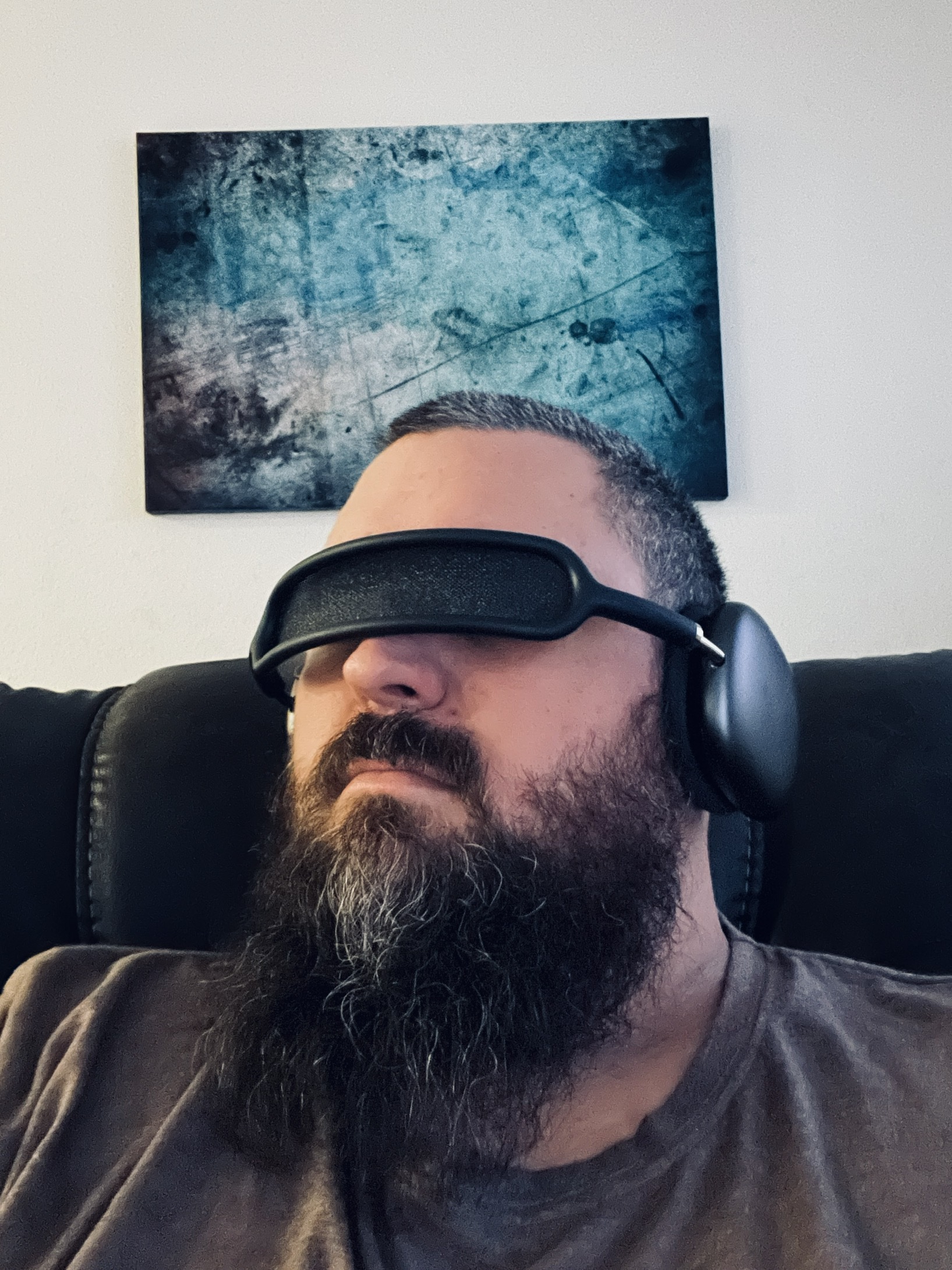I’ve been waiting to finish up with some major life stuff before diving into the world of 3D printers. Now that is finally behind me, and I am currently trying to find out which printer I want so that I can place an order.
So far I’ve set my eyes on the new Prusa CORE One. It ticks a lot of the boxes that I think I am after, including:
- As open as I can get (before going into that Voron-stuff, which I think I’m not ready for). I don’t want to be bogged down with having to run proprietary slicers through Wine and things like that. I am not sure how big of an issue that is with e.g. Bambu or Creality (if at all), but I’ve seen enough rug-pulls and enshittification processes that I don’t really want to risk that. I want to be sure that I can use FOSS tools such as Blender and FreeCAD for design, and similarly open slicers, and the whole workflow will work just fine.
- As future-proof as I can possibly hope for. I think the upgrade path from the MK4 to CORE One shows that they are serious about sustainability and longevity of their devices, and as far as I can tell, I should have no troubles sourcing replacement parts. I also want to support companies with this philosophy.
- Has a decent print volume (I know there are bigger, maybe I will be constrained by this at some point?)
- Enclosed - a major reason I did not want the MK4S was that it was not enclosed (but maybe you can get an enclosure?). It will be placed in my study where I spend most of my computer time (which often times is a lot, so I imagine I will be in the room while it is printing). I imagine, with the additional filter, that it will be better with an enclosure. Also, it will be easier to keep good temperature control during prints, as it can get cold here during winter.
- Locally produced (I’m EU based).
I understand that other manufacturers provide more “bang for the buck” and that I in that sense will be overpaying feature-wise. I am fine with that given my emphasis on the above criteria.
However, I am a complete newbie to 3D-printing. I am sure there are some limitations I have not thought about, and I was wondering if there are any major things I have not thought about that would actually affect me negatively and should make me reconsider this model?
I just realized that there are some important questions that none of us are asking (it sounded like you’ve already done some research, and have an idea of what you want (or at least what you think you need), but just so that everyone’s all on that same page):
- What are you looking to get out of the hobby?
- What is your tolerance for tinkering? Or in other words, are you willing to learn and fiddle with the machine or would you rather it “just work”?
- What kinds of things are you looking to print (not necessarily mutually exclusive categories: big things, small details, multi-color, outdoor/ automotive, etc)
- What’s your budget?
- What are you looking to get out of the hobby?
In general, I want to build my skill set to include CAD-modelling and printing things that could help me around my home and for other non-helpful, but fun, things. Some examples below. I am not looking at adding this to my professional skill set.
- What is your tolerance for tinkering? Or in other words, are you willing to learn and fiddle with the machine or would you rather it “just work”?
In general, I would like to tinker some. But I don’t want it to be prohibitively difficult to get started. I am new to this, and am not looking for an incredibly steep learning curve. For instance, I have understood that the Voron might suit my desire for openness more, but my impression is that it would be too much tinkering at this stage.
- What kinds of things are you looking to print (not necessarily mutually exclusive categories: big things, small details, multi-color, outdoor/ automotive, etc)
The immediate projects I have in mind are cases for various Pi/Pi Pico-based projects. Some indoor climate monitors for instance. There are several other smaller projects I have in mind, which could be for instance some custom mounts for my devices. So not too large things to begin with, and these things are what is most important to me now. But I want a multipurpose printer, that could handle both smaller figurines and larger sculptures also (not that exceeds the print volume of the Core One as of now). I know for instance that miniatures would probably be a lot better with a resin printer, but for now I don’t have a space that is properly ventilated for this. In the future I will consider getting more specialized printers if I find that I need it and have space for it.
- What’s your budget?
The Core One is in the higher end of what I had envisioned spending on this, but I can go a little higher if necessary
Tbh it sounds like the core one is a good choice here. Look at tinkering as something you use the printer to do and less as something to do to the printer itself.
I’ve got 2 prusas and while the XL has required a bit more work than my mk3s+ they both are excellent machines that I’ve run for thousands of hours with very little effort.
Welcome to the hobby! CAD modeling is the absolute best way to make your printer useful. A good pair of calipers are all you need to solve myriad issues around the house.
Thanks! Yes, a good pair of calipers are long overdue in my household. Now I will finally have a reason to measure everything!
I think you’ll be happy. Coming from someone that’s had a prusa mini for 3 years.
I also use FreeCAD, and I don’t think you’ll have a problem with that with any modern slicer, you can export in step to let the slicer do the meshing, or you can use the mesh workbench to get more control over the resolution of the mesh.
Don’t worry too much about print volume. Can always break stuff up into multiple prints, and that’s often a good idea even if the whole thing would fit inside the print volume.
I have killed a couple build plates, one from the TPU print sticking too well to PEI, and pulling chunks off, one from crashing the nozzle into it after I switched from a bare metal build plate to a PEI one without changing the Z offset.
Other than that, I’ve only really replaced one fan that was getting noisy.
As for filament, I use mostly PLA and ASA, because I don’t need to do anything special to keep those dry enough to print. Probably around 60% PLA, 25% ASA, 15% TPU. PETG is fine, but I need to dry it to keep from getting steam bubbles in my prints, and can’t really be bothered when I can just use ASA or PLA instead.
As for TPU, it will string like crazy if you don’t dry it, but you can mitigate this with some parts by turning on “avoid crossing perimeters”. Also try to avoid support material with TPU. I now print TPU on the back side(bare metal) of a third party build plate, using a very thin layer of glue stick.
In my opinion, the only disadvantage is the cost.
But even the cost difference might get recouped later on, if Prusa continues releasing upgrade kits the way they’ve been doing it for the i3 line. Support is also excellent. I broke a thermistor while upgrading a printer, and they sent me a free replacement because it was unclear if it was my fault or not.
Another disadvantage might be that you’ll become a militant Prusa fanboy, and never look at another brand again ;)
Yeah, I’m OK with the cost of it. I don’t only consider a feature vs. price picture, but also factor in things (like you say) support and longevity/sustainability.
The militant fanboyism surprised me a bit (maybe it shouldn’t have?) - looking at some of the comments below YouTube-reviews was… interesting…
Honestly, militant is probably not the right word. But I work with Prusas at my workplace, and the idea of buying a non-Prusa printer actually irks me.
I think you have it down pretty well.
It’s not perfectly open Source. Upgradeability can be reasonably expected, it’s not the cheapest, but a very good option.
One more thing that could be considered is if one believes Prusa may die as a company. That would of course reduce the aspect of upgradeability. Personally I believe they are fine, and just growing slower (more organically? Than Bambu for example).
Also Bambu will bring out another printer in a similar timeframe as Core 1 will come out. Depending on priorities it can make sense to wait to compare the offerings.
But I don’t think, given your reasonig you’d be making a mistake if you could buy now.
Thanks :)
One more thing that could be considered is if one believes Prusa may die as a company. That would of course reduce the aspect of upgradeability. Personally I believe they are fine, and just growing slower (more organically? Than Bambu for example).
Yeah, the thought had crossed my mind. From what I’ve gathered, Prusa has been playing catch-up in terms of functionality and price competitiveness and for many, the CORE One did not fully meet their expectations. I know nothing of their financial situation, but I can only imagine the general 3D-printing market growing more and more, so hopefully they can maintain a sufficient market share to keep a sustainable business going.
If Prusa went under, I still think I would have a better chance of maintaining a functional printer than if e.g. I had a Bambu printer and they went under (although that does perhaps not seem so likely at the moment?).
so hopefully they can maintain a sufficient market share to keep a sustainable business going
When the market grows, one can lose market share and still have a sustainable business ;).
You don’t even need a growth in revenue for sustainable businesses either.If Prusa went under, I still think I would have a better chance of maintaining a functional printer than if e.g. I had a Bambu printer and they went under (although that does perhaps not seem so likely at the moment?).
That seems reasonable. Let’s not forget that Bambu only increased their Firmware-Feature update promise from 2 years (march 2025) to 4 years (march 2027) after community outcry.
btw (I do not know either way) did a bambu printer ever get a firmware feature like Input Shaping, Phase Stepping, Crash Detection etc. as an update? For example does their LIDAR now work on textured plates? (I think it didn’t in the beginning)
Depending on how much you value open source vs domestic production, part of me thinks that you may want to consider the Sovol SV08. Sovol is based out of China, but that printer is basically a Voron 2.4 modified for mass production (ie much of the printer comes preassembled), and because of it the printer is very open source, as in here’s the GitHub repo. My only major concern would be that the machine ships with a non-standard hot end, however I recently learned (Here) that the community already has a mod to fix that. You also gain a much bigger build volume, for a fraction of the upfront investment. (Edit: That said, it may not be the most beginner friendly machine in existence (see replies))
I’m also somewhat hesitant to recommend a machine that isn’t out and doesn’t really have any reviews yet. With any new product launch like this, I’d almost guarantee that there will be a teething period as the bugs, glitches, and hiccups all get worked out (as goes the early adopter tax). Which means that you may face a slightly steeper leaning curve as someone new to the hobby (Prusa has been around for a hot minute, so I don’t expect it to be too bad, but it’s still worth mentioning). That said, if none of that scares you and if you’re already prepared for the pricetag, Prusa’s are known to be absolute workhorses, there’s no reason they can’t be entry level machines.
I’m pretty sure everything about Creality is Free Software, including both firmware and their self-branded slicing software (which I think is a fork of Slic3r, just like everybody else’s?).
I just bought an Ender 3 V3 SE and have been using it with FreeCAD and PrusaSlicer (on Linux) and sometimes controlling the printer with Octoprint – I haven’t even bothered downloading anything from Creality yet.
I picked the printer because it’s supposedly currently the best cheap 3D printer (mine was an open-box from Microcenter for $135). It doesn’t tick your last three boxes, but you can’t beat the price!
I advise against getting the brand new thing. My experience has been that frequently the reliability and feature set of yet-to-be-released things tend to be highly overstated. The CORE looks cool but I would give it six months after release before you consider buying one so you can see some real reviews.
Prusa has a pretty decent track record but they are really branching out of their comfort zone now and I would be cautious.
If you don’t want to wait, the Bambu P1S is a phenomenal printer. I wish they were more open along with everyone else but I have many, many, many hours on mine and has been an excellent purchase. It was a massive upgrade from my Prusa Mk3S.
Yeah, ideally it would already be out and I could look at some reviews. The timing is such that I want to get one now, and I would hesitate to get a MK4S instead where the Core One seems to better fit my wants. If it was either a brand new company or a printer that somehow revolutionized 3D-printing, I would be more hesitant to order before launch. But seeing as Prusa is an established company, and they are not reinventing the wheel here, I feel more comfortable (even as you say, they are stretching out of their comfort-zone - but isn’t one of their commercial grade printers already core xy?).
The XL is indeed corexy but it’s also marketed to professionals who would be able to navigate any issues. I’ve seen some mixed reviews on if it’s good.
FWIW, Prusa has definitely had some major failures. The MMU2 was fundamentally broken on release with sensors that were unreliable at best and the community had to step in with replacement models to get it even somewhat reliable.
Just be wary of trusting the brand. I like Prusa too but they aren’t immune to misses.
For me, pre-purchasing a Phrozen resin printer that every single YouTube influencer assured me was the absolute best printer ever made only for it to be an absolute mess that just sits on my shelf unused because it is complete garbage, was my lesson to wait for the reviews.
No, Prusa is perfect for them based on what they stated. Don’t recommend then stupid Chinese crap
On the enclosure: if you print PLA, PETG or TPU (which will probably be 99,99% of the print’s you’ll do) it has to be open
deleted by creator
deleted by creator





